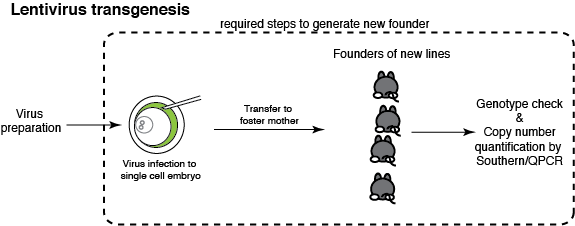
Lois et al (2002) established a highly efficient method to generate transgenic animals with lentivirus. Lentivirus is injected to the space between a single cell embryio and its zona pellucida. In the host cell lentivirus genome will be reverese-transcribed and integrated into host genome randomly.

